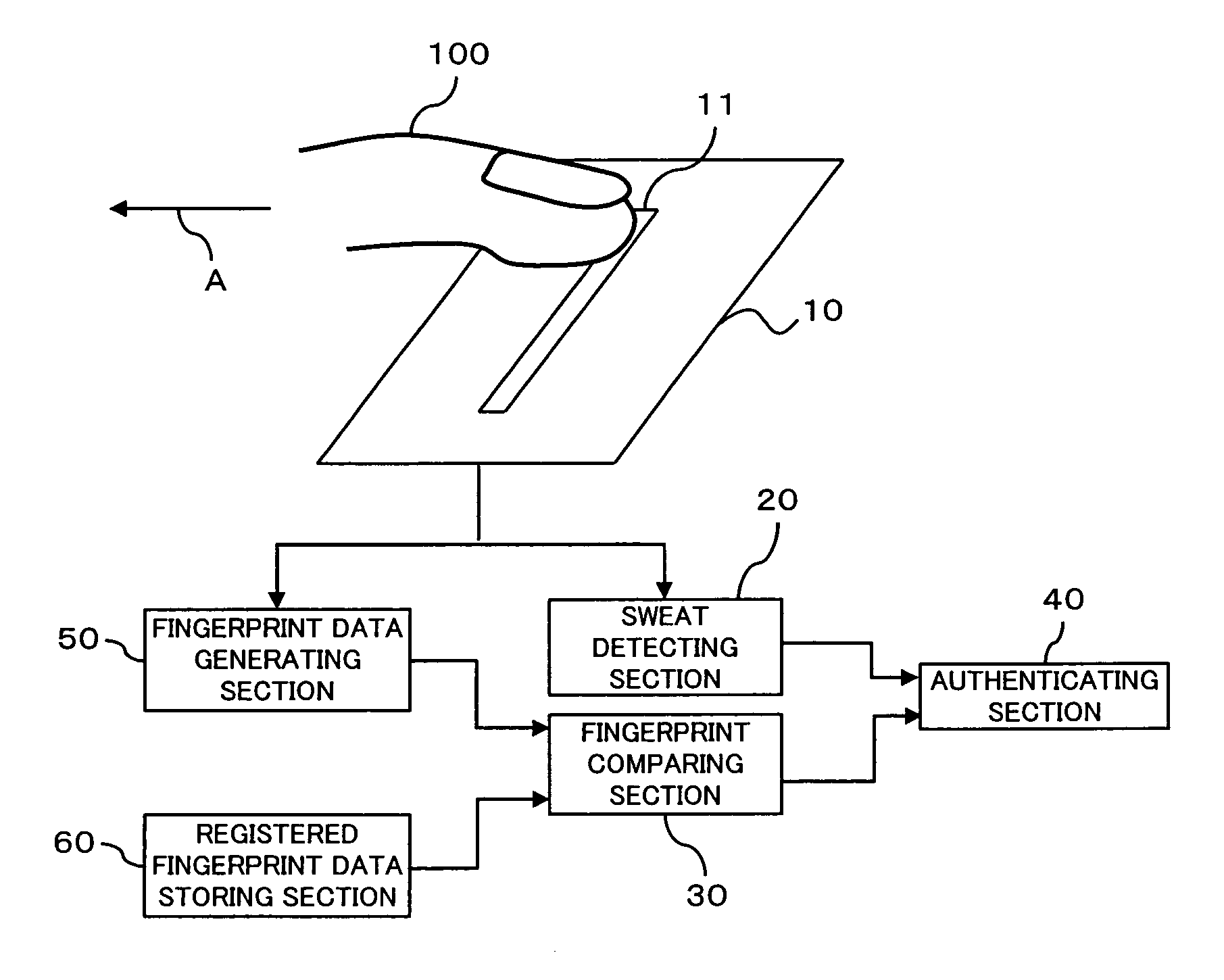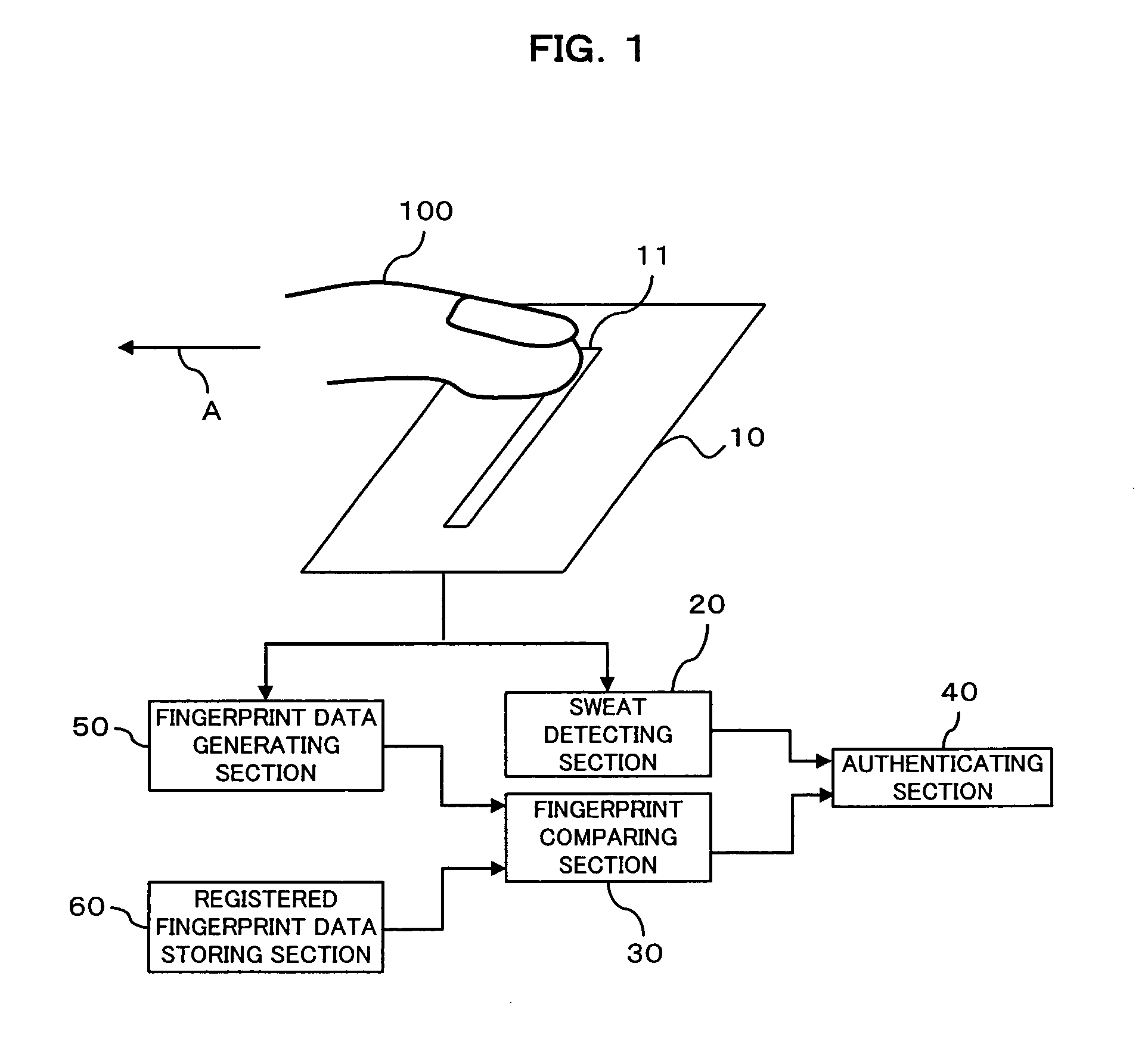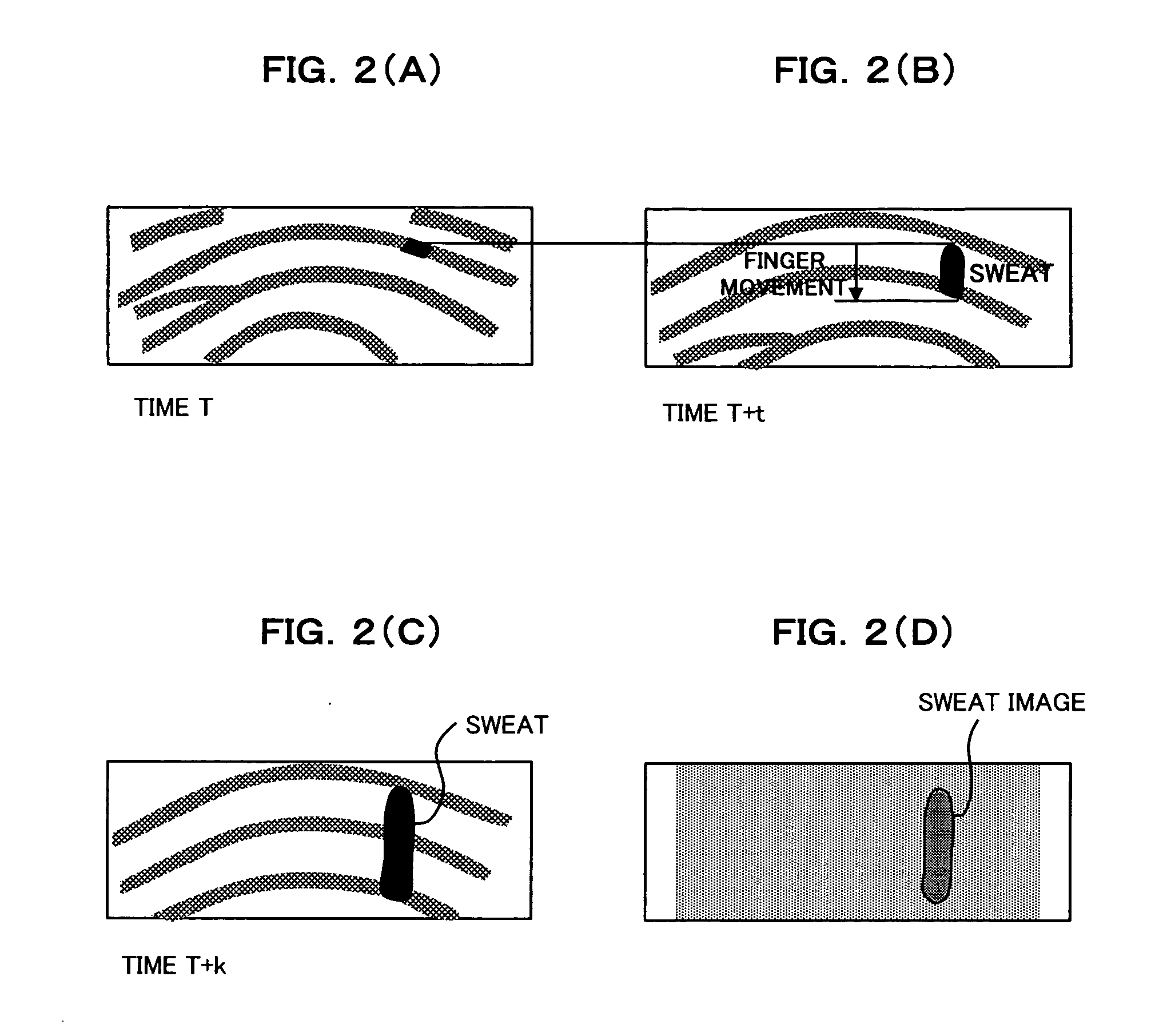Living-body detecting apparatus and method, and authenticating apparatus having living-body detecting function
a technology of living body and authenticating apparatus, which is applied in the field of living body detecting apparatus and method, and authenticating apparatus having living body detecting function, can solve the problems of unjust utilization of forged fingerprints, high risk of theft of passwords or id cards, and degradation of system reliability, so as to avoid unjust utilization, increase facility cost, and improve reliability
- Summary
- Abstract
- Description
- Claims
- Application Information
AI Technical Summary
Benefits of technology
Problems solved by technology
Method used
Image
Examples
Embodiment Construction
[0028] Embodiments of the present invention will be explained below, by making a reference to the accompanied drawings.
[0029]FIG. 1 is a block diagram illustrating a configuration of an authenticating apparatus having a living-body detecting function as one embodiment of the present invention. The authenticating apparatus of this embodiment to be illustrated in this FIG. 1, which is for employing a fingerprint (biometric information) of a person to be authenticated, thereby to authenticate this person, comprises a capacitance and sweep type fingerprint sensor (image obtaining means) 10, a sweat detecting section (secretion product detecting means) 20, a fingerprint comparing section (comparing means) 30, an authenticating section (authenticating means) 40, a fingerprint data generating section 50, and a registered fingerprint data storing section 60.
[0030] The capacitance and sweep type fingerprint sensor (image obtaining means) 10 is for continuously obtaining images of an integu...
PUM
 Login to View More
Login to View More Abstract
Description
Claims
Application Information
 Login to View More
Login to View More - R&D
- Intellectual Property
- Life Sciences
- Materials
- Tech Scout
- Unparalleled Data Quality
- Higher Quality Content
- 60% Fewer Hallucinations
Browse by: Latest US Patents, China's latest patents, Technical Efficacy Thesaurus, Application Domain, Technology Topic, Popular Technical Reports.
© 2025 PatSnap. All rights reserved.Legal|Privacy policy|Modern Slavery Act Transparency Statement|Sitemap|About US| Contact US: help@patsnap.com



